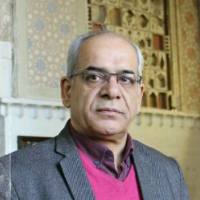Evaluation of Isfahan’s New Schools in the Late Qajar and the First Pahlavi Periods based on Shaping Factors and Physical Components
Modernization in contemporary Iranian history has led to the emergence of European-style schools and the city of Isfahan. These schools differed from traditional schools in terms of the content of the lesson and architecture. At the end of the Qajar period and the Pahlavi era, the construction of schools was on the agenda due to the growing population of Iran and the government’s policy of slightly expanding schools for training a specialized force. Most of the previous studies on the architecture of Isfahan schools have been focused on traditional schools (Isfahan schools) and less attention has been paid to the architecture of contemporary schools in the above-mentioned and knowledge about the process of its formation is scarce.
The purpose of this study is to identify the historical, political, cultural and social factors influencing the modern schools in Isfahan in these periods and to understand the nature of architecture and to compare the physical structure and architecture of these schools with each other.
This case study is descriptive-analytical. Five schools were selected as case studies. Data on the history of the schools were gathered through relevant documents. Using field study, another set of data on these schools were collected then analyzed based on the aim of the study.
The most important factors in the shaping of new schools are the constitutional revolution, the role of the Pahlavi government and the desire of the government to create the style of antiquity, the evolution in the 19th and 20th centuries in Europe, and the change of the Western educational system and the construction of several European-like schools in Isfahan by French and English missionaries, the presence of native (Isfahani) architects in this city, and their desire to build traditional (Isfahani) style school architecture. Together, these factors have led to the creation of some kind of integrated architecture in the buildings of most Isfahan schools.
- حق عضویت دریافتی صرف حمایت از نشریات عضو و نگهداری، تکمیل و توسعه مگیران میشود.
- پرداخت حق اشتراک و دانلود مقالات اجازه بازنشر آن در سایر رسانههای چاپی و دیجیتال را به کاربر نمیدهد.




